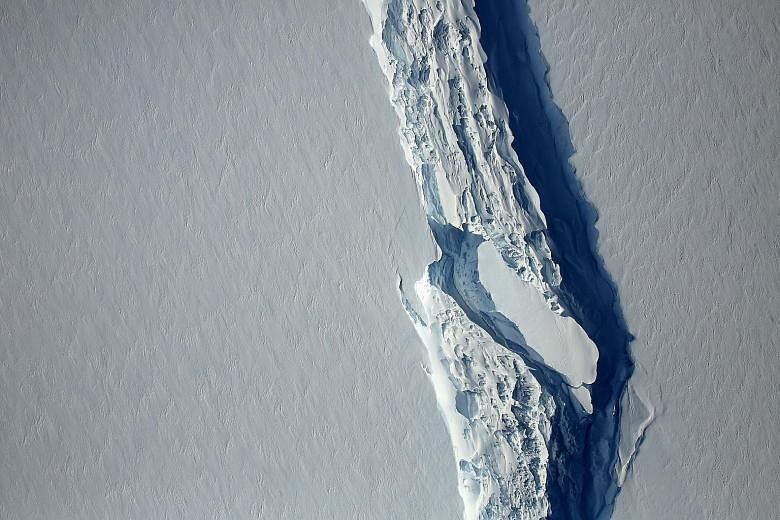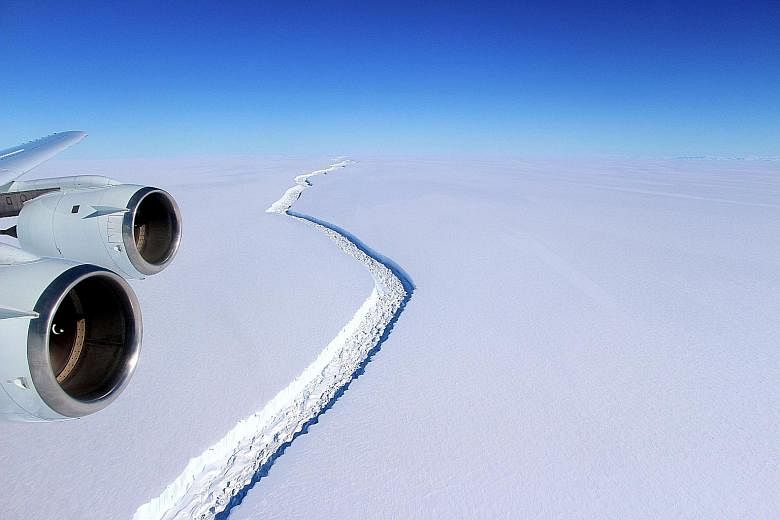LONDON • One of the biggest icebergs on record has broken away from Antarctica, scientists said yesterday, creating an extra hazard for ships around the continent as it breaks up.
The 1 trillion tonne iceberg, measuring 5,800 sq km, which is just over eight times the size of Singapore, calved away from the Larsen C Ice Shelf in Antarctica sometime between Monday and yesterday, said scientists at the University of Swansea and the British Antarctic Survey.
The iceberg has been close to breaking off for a few months. Throughout the Antarctic winter, scientists monitored the progress of the rift in the ice shelf using the European Space Agency satellites.
"The iceberg is one of the largest recorded and its future progress is difficult to predict," said Professor Adrian Luckman from Swansea University and lead investigator of Project Midas, which has been monitoring the ice shelf for years.
"It may remain in one piece but is more likely to break into fragments."
The ice will add to risks for ships now that it has broken off. The peninsula is outside major trade routes but the main destination for cruise ships visiting from South America.

In 2009, more than 150 passengers and crew were evacuated after the MTV Explorer sank after striking an iceberg off the Antarctic peninsula.
The iceberg, which is likely to be named A68, was already floating before it broke away, so there is no immediate impact on sea levels, but the calving has left the Larsen C Ice Shelf reduced in area by more than 12 per cent.
The Larsen A and B ice shelves, which were situated further north on the Antarctic peninsula, collapsed in 1995 and 2002, respectively. "This resulted in the dramatic acceleration of the glaciers behind them, with larger volumes of ice entering the ocean and contributing to sea-level rise," said Prof David Vaughan, glaciologist and director of science at British Antarctic Survey.
"If Larsen C now starts to retreat significantly and eventually collapses, then we will see another contribution to sea-level rise," he said.
Big icebergs break off Antarctica naturally, meaning scientists are not linking the rift to man-made climate change. The ice, however, is a part of the Antarctic peninsula that has warmed fast in recent decades.
"In the ensuing months and years, the ice shelf could either gradually regrow, or may suffer further calving events," Prof Luckman said.
AGENCE FRANCE-PRESSE


